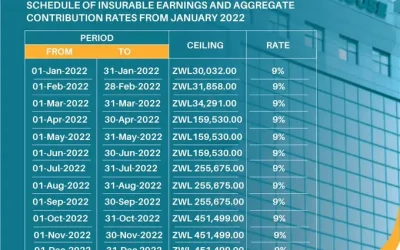Every registered operators is required by ZIMRA to acquire a fiscal device and interface it with ZIMRA. the process is known as fiscalisation. A fiscal device is an electronic machine used to record sales transactions and calculate taxes owed by a business.
Main features of Fiscal devices include
- Fiscal Memory: These devices contain a tamper-proof, read-only memory chip called a “fiscal memory” . This memory stores all sales data, including the date, time, item description, price, and tax amount for every transaction.
- Receipt Issuance: They generate receipts for customers that include details of the purchase and the calculated tax amount.
- Tax Compliance: By recording all transactions, fiscal devices help businesses comply with tax regulations and make tax audits smoother.
There are different types of fiscal devices, including:
- Electronic Fiscal Registers (EFRs): Standalone devices for businesses with lower transaction volume.
- Fiscal Printers: High-speed printers connected to a computer network, commonly used in supermarkets.
- Electronic Signature Devices (ESDs): These devices add a digital signature to electronic invoices, ensuring their authenticity
ZIMRA and Fiscalisation Data Management System (FDMS).
Taxpayers meeting or surpassing the threshold of USD25,000 or its equivalent in ZWL per period of twelve months are advised to compulsorily register for VAT with effect from 1 January 2024. Effective after registration, the taxpayer should acquire a fiscal device and interface it with ZIMRA.
VAT Registered Operators should ensure that:
- All taxable transactions are fiscalised and connected to the FDMS at ZIMRA;
- All points of sale operated are installed with upgraded Fiscal Devices, systems/applications
which are compatible and interfaced with the ZIMRA Fiscalisation Data Management System
(FDMS) - All Fiscal Tax Invoices, Receipts, Debit or Credit Notes issued at points of sale operated
by the taxpayer should include:- TIN of the seller; and
- New VAT numbers for both the buyer and the seller; and
- Verifiable QR and Authentication Codes generated from FDMS.
- Submit and remit all VAT returns and payments on time.
- Maintain their accounting records for at least six years.


